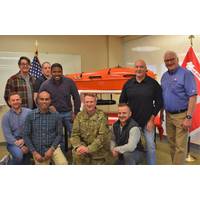
USACE Survey & Mapping Employees Awarded for USV Innovation
U.S. Army Corps of Engineers’ employees in the New York District’s Survey and Mapping Branch, Operations Division, have been recognized with the 2023 Innovation of the Year Award from Army Corps Headquarters in Washington, D.C., a national honor recognizing outstanding accomplishments in engineering forwarding the mission and serving the Nation.A team of 36 employees planned, designed and built SURVEYOR AMY, a 6.5-foot unmanned craft that can travel at 16 knots and collects hydrographic survey data ─ measuring the physical features of bodies of water and adjacent land areas, including
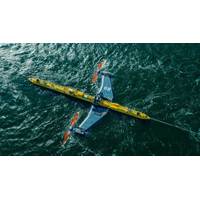
Orbital to Supply Floating Tidal Energy Turbine for Washington State Project
Orbital Marine Power, a Scottish renewable energy company focused on the deployment of its pioneering floating tidal turbine, has been confirmed as the technology partner for Orcas Power & Light Cooperative (OPALCO)’s proposed site off Blakely Island in Rosario Strait, Washington State.Building on a memorandum of understanding (MoU) signed between Orbital and OPALCO in 2021, the latest update follows the U.S. Department of Energy (DOE) shortlisting two marine energy projects to receive $6 million for the development of a tidal energy research, development, and demonstration pilot site.
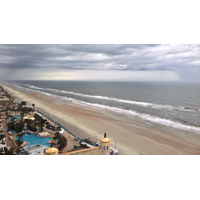
US Invests $3.9 Million for Ocean-based Climate Resilience Accelerators
Renewable Power Accelerator - RePower, National Offshore Wind Research & Development Consortium, $249,991.VirginiaOpenSeas Data Accelerator, Old Dominion University Research Foundation, $249,816.NOAA Ocean-Based Climate Resilience Accelerator, FedTech, $176,799 (full recommended funding: $249,844).WashingtonWashington Maritime Blue Ventures for Ocean-based Climate Solutions, Washington Maritime Blue, $248,403.WisconsinGreat Lakes Resilience Accelerator, gener8tor Management, LLC, $250,000.Later this month, all Phase 1 awardees will be invited to apply to Phase 2 of the Ocean-based Climate Resilience

US Invests Nearly $16 Million to Advance Marine Energy
million total investment from the Bipartisan Infrastructure Law to support the development and installation of one or more tidal energy devices that can be transitioned to a commercial project.The selected projects are:• A team led by Orcas Power and Light Cooperative (OPALCO), based in Eastsound, Washington, proposes to deploy a tidal energy turbine in Rosario Strait in the San Juan Islands in Washington State. The device is expected to be capable of producing about 2MW of power. OPALCO aims to develop a pilot tidal power program to provide a reliable and resilient local power supply for San Juan
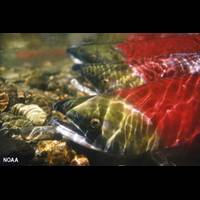
US Announces $27 Million for Pacific Salmon Research
science to identify the actions needed to recover the species.”“NOAA scientists at Seattle's Northwest Fisheries Science Center need funding for groundbreaking research into how salmon are adapting to the changing climate and dealing with threats like stormwater pollution here in Washington,” said Washington Senator Maria Cantwell. “Salmon are central to the culture, economy and marine ecosystems of the Pacific Northwest, and this investment in science will help us make the right choices and help protect salmon for years to come.""From the California Coast through
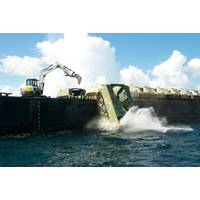
Not All Underwater Reefs are Made of Coral
specifically for use as artificial reefs.Planes, trains and automobilesFor our study, we gathered records of intentional reefings dating back to 1899 and occurring off artificial all U.S. coastal states, except for six without artificial ocean reef programs: Maine, New Hampshire, Connecticut, Oregon, Washington and Alaska.For some of these events, especially in recent decades, there were detailed records of the sizes and quantities of sunken objects or seafloor maps from which we could derive these measurements. These reefs were easy to quantify.Other records, including some from the early 20th century
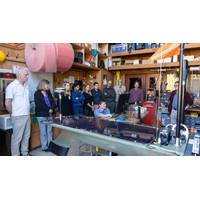
Sonardyne Holds Seabed Deformation Technical Workshop
in the USA and Canada to share insights, experiences and how its GNSS-A and AZA instruments can be further improved to meet future needs.These included; Ocean Networks Canada, U.S. Geological Survey (USGS), Georgia Institute of Technology, Woods Hole Oceanographic Institution and the University of Washington, as well as our hosts Scripps Institution of Oceanography in California. As well as providing the stunning backdrop for this event, Scripps Institution of Oceanography furnished instruments for the workshop from the large pool of our equipment.GNSS-A and AZA are two independent technologies that

USGS : New Topobathymetric Dataset for Potomac River
of submerged topobathymetric lidar data. The project deliverables included a 3D point cloud and seamless topobathymetric Digital Elevation Models (DEMs) for that section of the river. This was the 2nd Potomac River project, with the first extending from Shepherdstown, WV to the Little Falls dam near Washington, D.C. It is expected that these maps will provide a much-needed tool to predict the presence and movement of oil spills in the Potomac River and support ICPRB’s mission to protect and enhance the waters and related resources of the Potomac River basin through science, regional cooperation

The Curious Case of the 1,200 MW Transmission Size “Limit” in New England
of Marine Technology Reporter.About the AuthorsTheodore Paradise is a partner in K&L Gates’ Boston and New York offices where he assists clients in navigating the changing landscape of the electric industry, advising clients regarding ISOs and RTOs, offshore wind, and transmission development.Washington, D.C., partner Kimberly Frank co-leads the firm’s global Power practice group and focuses her electric regulatory practice on representing clients in matters before FERC and state utility commissions.Ruta Skučas is a federal energy regulatory and wholesale electricity markets partner in Washington



 February 2024
February 2024





